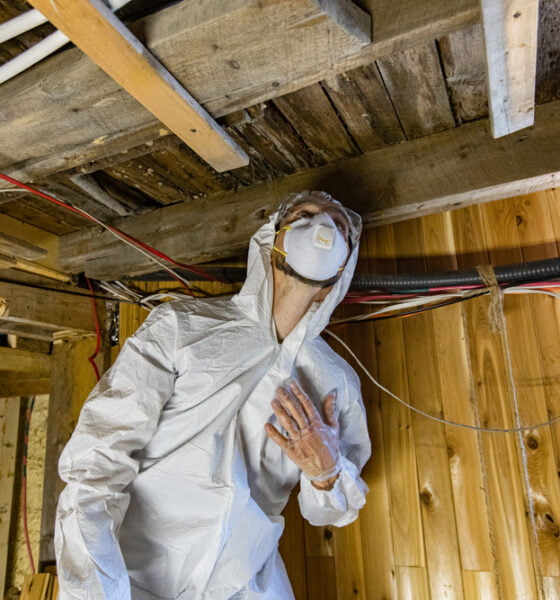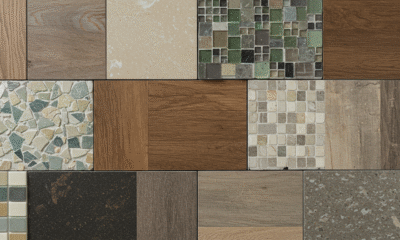

Features
Keep Mold in Your Home from Harming Your Health and the Planet
Mold is a type of fungus that thrives in damp environments and can cause respiratory problems for those exposed to it. It is also bad for the environment because it releases harmful toxins into the air and water. Therefore, it is important to recognize the signs of stress and take steps to reduce its effects on our health and environment.
Molds break down plant and animal matter in the environment. They can grow in moist areas with organic material, like soil, foods, plants, and homes. Molds reproduce by releasing spores that can spread through air, water, or animals. Therefore, when mold spreads beyond your home, it can harm the surrounding environment as well.
Another reason mold is bad for the planet is that it causes your home to decay more quickly. You will need to waste natural resources such as wood to replace parts of the home that have been damaged by mold. Of course, there are eco-friendly home improvement options to minimize the environmental impact when replacing damaged walls and floors, but it is still better for the planet if you avoid the damage in the first place.
This means that you need to make it a priority to control mold if you want to help the planet.
What Eco-Friendly Homeowners Should Do to Control Mold
Mold can be a homeowner’s worst nightmare. Not only is it unsightly, but it can also cause respiratory issues and even damage the structure of your home.
Fortunately, using lime-based anti-mold paint for your home renovation project may be a solution. This specially formulated paint reduces the presence and spread of mold in damp environments by creating an alkaline surface mold cannot survive on.
The anti-mold paint raises the PH value to create an environment where mold will not thrive or spread. Furthermore, this type of paint is solvent-free, making it a more eco-friendly option and far safer than traditional paints while providing excellent coverage and durability. This is one of the best eco-friendly options for improving indoor air quality. With these benefits in mind, choosing a lime-based anti-mold paint for your next project might be the best decision you make when tackling any indoor renovation job!
The Science Behind Lime-Based Anti-Mold Paint
Lime-based anti-mold paint is a specialized coating that repels and inhibits mold growth by raising the p H value on surfaces, creating an environment where mold will not thrive or spread. This type of paint also typically contains a fungicide for added protection against fungal spores.
The science behind lime-based anti-mold paint lies in its ability to raise the alkalinity levels on painted surfaces, making them inhospitable to mold and mildew growth. The active ingredients within this type of paint are usually calcium carbonate and sodium silicate, both of which increase the surface’s PH level above 7 (the neutral point) and create an environment that is too acidic for most forms of mold to survive.
Lime paints may also contain mold inhibitors such as benomyl or chlorothalonil to further prevent any potential fungal infestations from developing.
Moreover, unlike other anti-fungal coatings such as oil-based paints or varnishes, lime-based paints do not emit harmful volatile organic compounds (VOCs) into your indoor air, which reduces your exposure to potentially hazardous fumes during application and usage afterwards. Furthermore, these solvent-free formulations are generally non-toxic and pose no threat if accidentally ingested by children or pets around your home. With all these environmentally conscious advantages, it’s no surprise why many homeowners use solvent-free and breathable anti-mould paint when tackling an interior renovation project!
The Benefits of Using Lime-Based Paint
Using lime-based paint has many other advantages beyond just its anti-mold capabilities. As mentioned, it is solvent-free and a much safer option than traditional paints and varnishes for both the user and their environment.
No potentially hazardous fumes will be released into your home when applying or using this type of solvent-free anti-mold paint, so you can be sure you’re not exposing yourself or your family to unnecessary health risks. Furthermore, these formulations are also generally non-toxic and pose no threat if accidentally ingested by children or pets around your home.
Another benefit of using lime-based paints is their durability; this coating provides excellent coverage and protection against wear and tear while allowing walls to breathe naturally due to its breathable properties. Not only does this help preserve the integrity of surfaces, but it also reduces instances where water may become trapped behind walls causing dampness which can lead to mold growth. Finally, since lime-based paints raise the PH level on painted surfaces, they create an inhospitable environment for mould spores, helping reduce potential infestations from occurring in the future too!
Application and Use of Lime-Based Paint
When applying anti-mold paint, you should always ensure you’re using the right product for the job. Check the label to verify that it is a lime-based anti-mould paint and not just any regular type of wall paint – this will help ensure maximum protection from mold growth. Additionally, follow all application instructions provided on the packaging, as these typically differ from those of traditional paints.
It’s also important to remember that maintenance is important for keeping your painted surfaces safe from mould growth. Lime-based paints can last up to 8 years without a recoat, but they do need some TLC now and then. Regularly wiping down walls with warm water and detergent or vinegar-based solutions (as instructed by manufacturers) helps remove dirt build-up, which can create ideal environments for fungal spores; additionally, keep an eye out for any signs of dampness or discoloration as these could suggest potential problems before they get out of hand!
Overall, choosing a high-quality lime-based anti-mold paint is one way homeowners can protect their homes against mould while maintaining good interior decor standards and home safety regulations. With proper selection, application techniques and regular maintenance checks, any home can reap its benefits!
Conclusion
In conclusion, lime-based anti-mold paint is an excellent choice for any eco-friendly home or renovation project, providing superior protection against mold and mildew by creating a hostile environment on painted surfaces where mold cannot thrive or spread. It is also solvent-free, making it far safer than traditional paints while providing excellent coverage and durability.
Additionally, its breathable properties allow walls to breathe naturally, which helps reduce the risk of water getting trapped behind them, leading to dampness and mould growth in certain areas. Finally, with regular maintenance checks, you can be sure that your painted surfaces will remain safe from mould long into the future!
All these benefits make this type of eco-friendly paint ideal for protecting your family’s health and preserving the integrity of your home over time – making it a winning investment for many homeowners out there!


 Environment10 months ago
Environment10 months agoAre Polymer Banknotes: an Eco-Friendly Trend or a Groundswell?

 Environment12 months ago
Environment12 months agoEco-Friendly Home Improvements: Top 7 Upgrades for 2025

 Features9 months ago
Features9 months agoEco-Friendly Cryptocurrencies: Sustainable Investment Choices

 Features10 months ago
Features10 months agoEco-Friendly Crypto Traders Must Find the Right Exchange



























